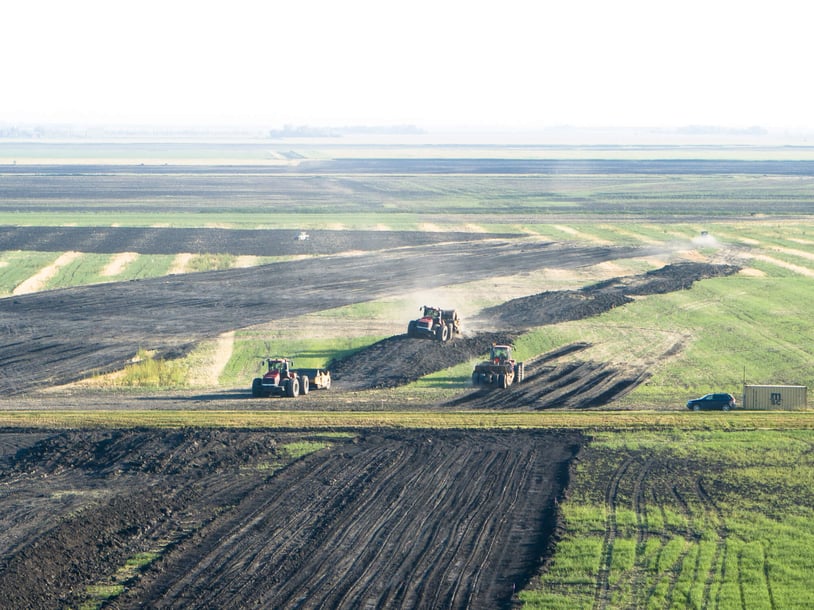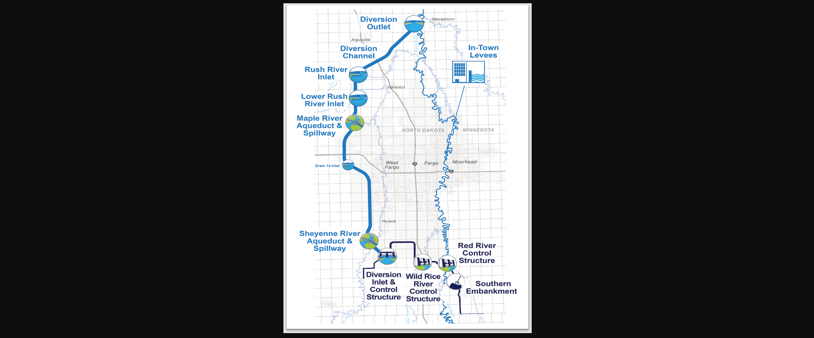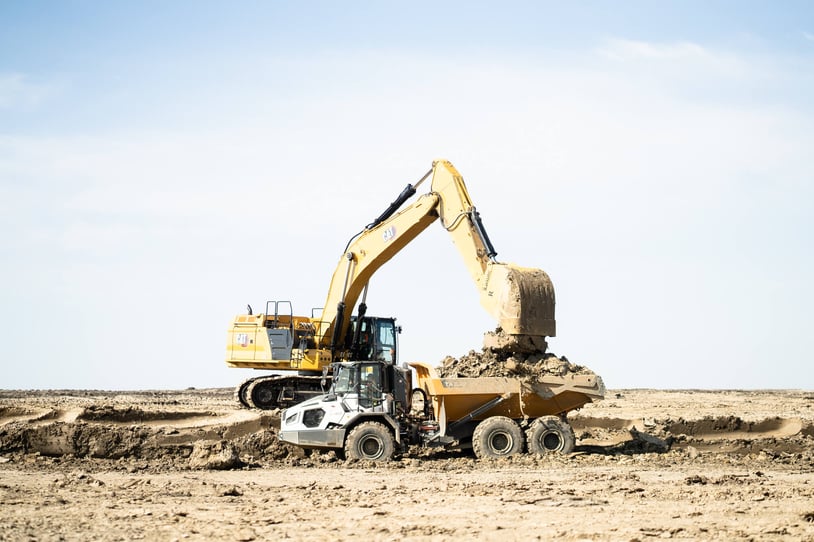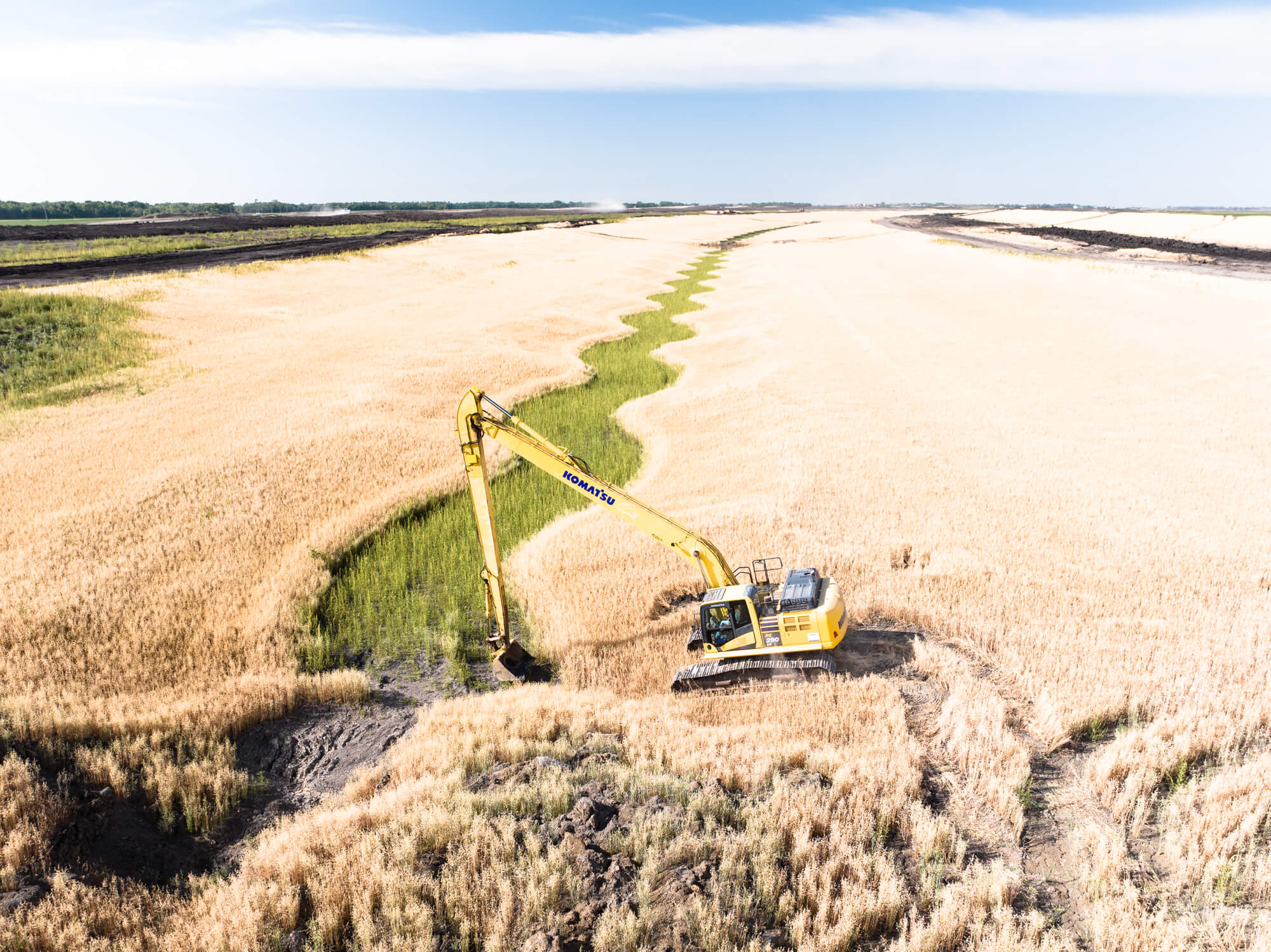
Day 22 - Flood Control

After an eleven-hour drive the previous day, we awoke in a medical plaza parking lot (my friend owned the place) in Fargo, North Dakota.
Frankly, morale was low. We had worked for three weeks straight and traveled the entire US while sleeping in a 25' rectangle. I'd underestimated the exhaustion. That said, we had work to do.
We drove north and turned off the interstate onto a rural road. A short drive on asphalt gave way to gravel, where we cruised past nonstop corn, soybeans, and sunflowers on our way to the morning's party.
Our visit was with ASN Constructors, the tri-venture building the Fargo Moorhead Flood Diversion Project, one of America's largest flood control projects. The over $3B project aims to divert flood waters from the Red River around the city via a new 30-mile channel. Once complete, the project will protect over 100,000 people from 100 to 500-year flood events, which have devastated the area for decades.

The area is prone to flooding because it's FLAT. The Red River usually runs relatively tamely, but when melting snow combines with rain, the river can rapidly fill. When the natural channel is at capacity, the water has no choice but to fan out, flooding homes and businesses.
Everything starts at the southern end of the town (the river flows north), where crews are building enormous levees and floodgates. The levees (essentially earthen walls) will hold back the water, while the floodgates will control the flow into the natural river and the new diversion channel.

The diversion channel is the project's main event—crews are digging the 30-mile channel through flat farmland and building a levee on the "city side" for particularly extreme events. Once entirely around civilization, the diversion rejoins the Red River up north.
Crews must relocate utilities, roads, interstate highways, and railways via bridges and other structures along the way.
We met our hosts where they most recently broke ground. The plan was to see the entire process, finishing at the nearly completed channel near the outflow.

An army of tractors and pans and wheel tractor scrapers stripped the topsoil and first few feet of earth from land that had only known agriculture for decades. Since the material is so soft throughout the summer, the tractors and pans allow for more utilization thanks to their lower ground pressure.
We then drove a few miles north, where the channel started looking like a channel. After the tractors removed the softest material, 90-ton excavators and haul trucks handled the thick and wet clay underneath. Every truck hauled the clay to the embankment, where dozers knocked it down to form the levee. Dozers with GPS also followed the excavators, leaving beautiful slopes behind.

Since the channel is so enormous, the crews will move over 50 million yards over five years to make it a reality!
We briefly checked out an area where they're preparing to re-route a BNSF rail line and Interstate 29 (casual), then finished our tour at the completed product.
Imagine an enormous channel with a large levee on one side and a smaller V-ditch at the bottom. The V-ditch will flow year-long thanks to regular rain and runoff. Upon 100-year flood events, the channel will fill with water, and the levee would only work during extreme events.

After excavation, they seed everything to make it look quite lovely. In only a few years, the community likely won't even remember what it looked like during construction, as it'll blend nicely with the surrounding land.
That said, they'll undoubtedly appreciate that they no longer need flood insurance. Not only does the Dirt World get water TO your home, but it can also keep it away!
Next on the agenda… Making big rocks into small rocks.













